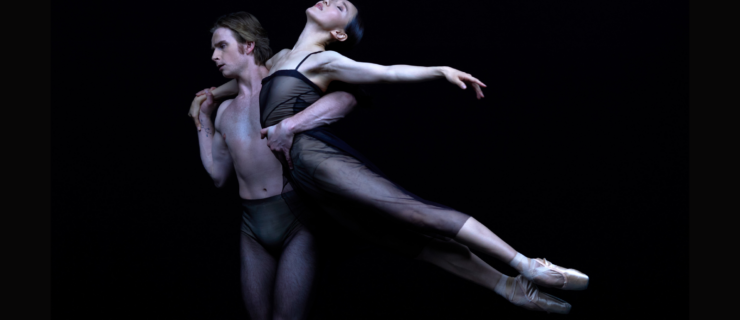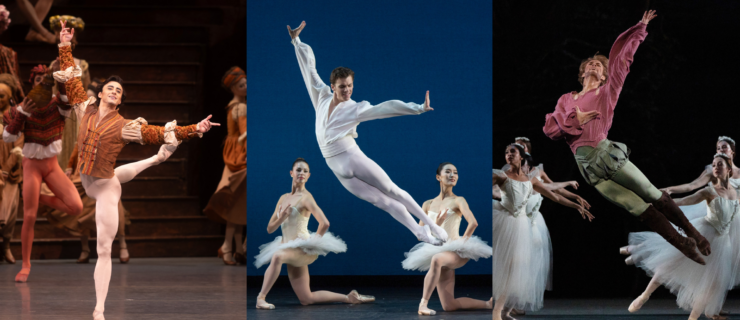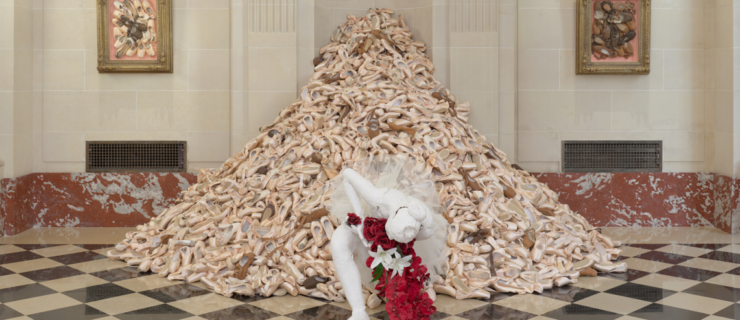In Milestone Move, Oregon Ballet Theatre Debuts Its New Full-Length "Napoli"
This week marks a milestone achievement for Oregon Ballet Theatre: October 6–13, the company will unveil Danish choreographer August Bournonville’s full-length Napoli. OBT is only the second American company to perform the full-length version (Ballet Arizona was the first, in 2015), and it is the first to build a production of Bournonville’s 1842 ballet from scratch by investing in its own sets and costumes. In addition, a “dream team” of stagers with deep Royal Danish Ballet roots has come to Portland to stage the work.
Artistic director Kevin Irving notes that OBT currently only owns two full-length productions: Nutcracker and Swan Lake. He felt Napoli, which follows the love story between Teresina and Gennaro, a young fisherman, would make a popular addition to the repertoire. “It’s a simple journey to a culmination that celebrates coming together in a community, and I think that’s what makes it timeless,” he says.
 Eva Burton in rehearsal for Bournonville’s “Napoli.” Photo by Yi Yin, Courtesy OBT.
Eva Burton in rehearsal for Bournonville’s “Napoli.” Photo by Yi Yin, Courtesy OBT.
Irving’s plan to produce an evening-length Napoli has been years in the making. He started by having the company perform Act III, famous for its rousing tarantella, in 2015. “I hoped that by doing the third act, we would create some momentum for doing the full ballet,” he says. He brought in Bournonville producer and former Royal Danish Ballet artistic director Frank Andersen to stage it, and even sent a group of five dancers to Copenhagen to train in the Danish style. “Frank and I talked about it—first let’s whet the appetite, give the company a chance to dabble in and get accustomed to the Bournonville style and then see how it goes.” To realize the full-length production, Irving commissioned Marie í Dali to design the sets and costumes and brought back Anderson, as well as former Royal Danish Ballet stars Dinna Bjørn and Eva Kloborg, to stage it. “It’s really useful to have deep immersion in a style in order to inform really great artistry and versatility,” says Irving. “And Bournonville is a deep dive.”
 Bournonville stager Frank Anderson with OBT principal Peter Franc. Photo by Yi Yin, Courtesy OBT.
Bournonville stager Frank Anderson with OBT principal Peter Franc. Photo by Yi Yin, Courtesy OBT.
Mastering the Danish choreographer’s fleet-footed choreogrpahy is not easy, but OBT’s dancers are prepared. Much of the current troupe danced in 2015’s Act III performances, and Bournonville variations have since been integrated into OBT II’s curriculum so that younger dancers are familiar with the style. Plus, Andersen, Klobborg and Bjørn came to Portland six months ago to cast the ballet and stage some initial material before returning in early September. “For the men, there’s so much petite allégro, grand allégro, beats and double tours and they all have to be extremely precise,” says principal dancer Peter Franc, who stars as Gennaro in the opening night cast. “You need a lot of lower leg stamina, yet the arms are very calm.”
 OBT principal Xuan Cheng in rehearsal for “Napoli.” Photo by Yi Yin, Courtesy OBT.
OBT principal Xuan Cheng in rehearsal for “Napoli.” Photo by Yi Yin, Courtesy OBT.
Principal Xuan Cheng, who plays Teresina alongside Franc, notes that perfecting the upper body’s simplicity is harder than it looks. “The shape of the fingers, how you open your arms from first to second position—everything has to be so graceful, like it’s nothing, even if you’re dying!”
 Visiting stager Dinna Bjørn. Photo by Yi Yin, Courtesy OBT.
Visiting stager Dinna Bjørn. Photo by Yi Yin, Courtesy OBT.
In addition, the ballet’s copious amounts of mime—so central in Bournonville ballets—must also be perfected. Andersen, Bjørn and Kloborg have worked extensively with the dancers on getting it right. “All of the mime has music, and there are so many details,” says Cheng. “We repeat again and again and again.” Franc agrees. “We work on the mime as much as we work on the dancing,” he says. But he adds that the Danish team’s passion for Bournonville is contagious. “They just love what they’re doing, and it spreads to everybody else in the room.”
 Stager Eva Kloborg works with Franc and Cheng in rehearsal. Photo by Yi Yin, Courtesy OBT.
Stager Eva Kloborg works with Franc and Cheng in rehearsal. Photo by Yi Yin, Courtesy OBT.
Irving hopes the OBT production will inspire other directors to bring Napoli to American stages. “It’s warm, it’s accessible, it’s a great tool for pushing your dancers’ artistic growth,” he says. “And it’s somewhat of an antidote to the world around us. You get the sense that everybody, no matter how different, can come together when they’re dancing.”




